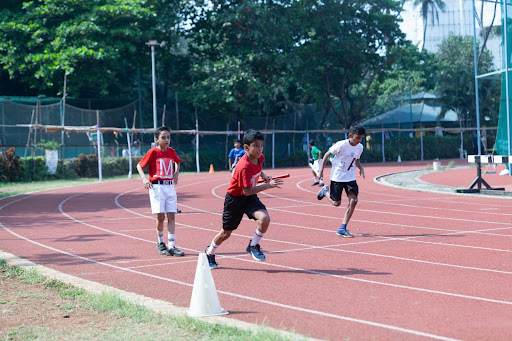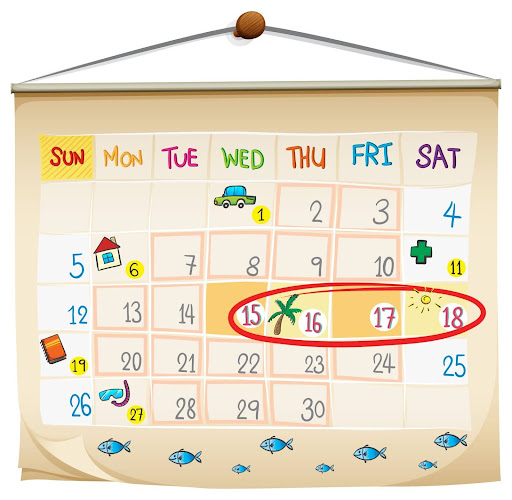
Parents often face a dilemma when it comes to their children’s schedules.
Should you prioritize academic tutoring and test preparation, or encourage participation in sports, arts, and other extracurricular activities?
With limited time and resources, many families feel forced to choose between academic excellence and broader personal development.
Here’s the reality: this isn’t an either-or decision. The most successful students—those who excel academically while also developing into well-rounded, resilient individuals—typically engage in both focused academic work and meaningful extracurricular pursuits.
Research consistently shows that students involved in activities outside the classroom often perform better academically, not worse, despite having less time dedicated solely to studying.
This article explores why extracurricular activities matter, how they complement rather than compete with academic achievement, and practical strategies for creating a balanced schedule that supports your child’s overall development without leading to burnout.
The Academic Benefits of Non-Academic Activities
It might seem counterintuitive, but time spent away from textbooks often improves academic performance. Extracurricular activities develop skills that directly transfer to classroom success—time management, discipline, focus, and the ability to handle pressure.
Consider a student involved in competitive sports. They learn to manage their energy throughout long days, prioritize tasks when time is limited, maintain focus despite distractions, and perform under pressure.
These exact skills apply when facing a challenging exam schedule or managing multiple project deadlines. The student who has learned to stay calm during the final minutes of a close game brings that composure to exam situations.
Creative pursuits like music, drama, or visual arts develop different but equally valuable cognitive skills. Learning an instrument strengthens memory, pattern recognition, and the ability to process multiple streams of information simultaneously.
Theatre builds public speaking confidence and teaches students to think on their feet. Visual arts enhance spatial reasoning and attention to detail.
All of these capabilities support academic learning across subjects.
Physical activity deserves special mention for its direct impact on cognitive function. Regular exercise improves concentration, memory, and mood—all critical factors in academic performance. Students who engage in regular physical activity often find they can focus better during study sessions and retain information more effectively than when they’re sedentary.
The social aspects of group activities also contribute to academic success. Students involved in team sports, performance groups, or collaborative projects develop communication skills, learn to work with diverse personalities, and build the kind of social confidence that makes classroom participation easier.
The student who regularly collaborates with teammates on the field finds group projects at school less intimidating.

Movement and Expression: The Role of Dance in Student Development
Among the various extracurricular options available, dance occupies a unique space that combines physical activity, artistic expression, discipline, and performance.
It’s one of those rare activities that develops the body, mind, and emotional intelligence simultaneously.
Dance training builds physical strength, flexibility, coordination, and body awareness. But beyond the physical benefits, dance develops musicality, spatial awareness, and the ability to memorize and execute complex sequences—skills that translate surprisingly well to academic contexts.
The student who can remember a three-minute choreographed routine typically has little trouble memorizing historical dates, scientific processes, or mathematical formulas.
The discipline required in dance training is exceptional. Students learn to accept and apply corrections, to practice movements repeatedly until mastery is achieved, and to push through physical discomfort to reach their goals.
This kind of focused persistence is exactly what’s needed for tackling difficult academic subjects where progress comes through consistent effort rather than instant understanding.
Performance opportunities in dance build confidence in ways that few other activities can match.
Standing on stage in front of an audience requires students to manage nervousness, trust their preparation, and commit fully to the moment—experiences that prepare them for academic presentations, interviews, and leadership opportunities.
For families in Singapore looking for quality dance training that balances technical excellence with student wellbeing, institutions like Dancepointe Academy offer structured programs across multiple dance styles. These established academies understand how to challenge students appropriately while maintaining the joy and creativity that make dance appealing.
The combination of regular classes, performance opportunities, and supportive community helps students develop both skills and confidence that extend far beyond the studio.
Dance also offers something increasingly rare in our achievement-oriented culture: an outlet for pure expression and creativity. In an educational environment heavily focused on quantifiable results, having a space where students can express emotions, explore movement, and create something beautiful provides essential balance.
This creative outlet often helps students process stress and maintain emotional equilibrium during demanding academic periods.

When Academic Support Is Needed: Finding the Right Help
While extracurricular activities enhance overall development, there are times when focused academic support becomes necessary. Perhaps your child is struggling with a particular subject, needs help preparing for important exams, or requires additional challenge beyond what school provides.
Recognizing when academic intervention is needed—and finding the right type of support—is crucial for student success.
The key is identifying specific needs rather than applying generic tutoring. A student who understands mathematical concepts but makes careless errors needs different support than one who struggles with fundamental understanding.
Similarly, a student who freezes during exams despite knowing the material requires different help than one who hasn’t mastered the content.
Subject-specific tutoring works best when it addresses actual learning gaps rather than simply reviewing school material.
Effective tutors diagnose where understanding breaks down, then build from that point using approaches that match the student’s learning style.
They also teach study strategies and problem-solving approaches that students can apply independently.
For students taking standardized exams or facing particularly challenging courses, specialized support can make a significant difference. Australian students preparing for VCE exams, for instance, often benefit from targeted preparation that goes beyond standard classroom instruction.
Subjects like mathematics, which build cumulatively and where gaps in understanding compound over time, particularly benefit from expert support. Resources like general maths tutoring programs specifically designed for exam preparation can help students not just pass but excel in these critical assessments.
The timing of academic support matters. Waiting until a student is seriously behind often means spending months catching up rather than moving forward. Early intervention when small gaps appear prevents those gaps from becoming chasms.
Regular check-ins about which subjects feel challenging—before grades drop—allow for proactive rather than reactive support.
It’s also worth noting that academic support shouldn’t mean endless hours of additional study.
Quality matters more than quantity.
Two focused hours with clear objectives and active learning typically produces better results than four hours of passive review.
The goal is efficient learning that leaves time for the rest of life, not an endless grind that leads to burnout.

Making Learning Engaging: Creative Approaches to Difficult Subjects
One reason students struggle academically isn’t lack of capability but lack of engagement. When subjects feel boring or irrelevant, motivation disappears. Finding ways to make learning genuinely interesting—rather than just bearable—transforms the entire educational experience.
Mathematics particularly benefits from creative presentation.
While essential, it’s also the subject students most often claim to hate. Much of this aversion comes from how math is traditionally taught: as abstract procedures to memorize rather than tools for solving interesting problems.
When math connects to real contexts—calculating statistics for favorite sports teams, designing structures in video games, understanding probability in games of chance—it suddenly becomes relevant rather than arbitrary.
Seasonal and thematic approaches can reinvigorate subjects that feel stale. Why not explore mathematical concepts through holiday themes that capture student interest? For example, using halloween math activity sheets transforms standard problems into engaging puzzles where students might calculate candy distribution, work with spooky statistics, or solve costume-themed word problems.
The mathematical concepts remain the same, but the context makes practice feel like fun rather than work.
This principle applies beyond mathematics. Historical events become more engaging when explored through primary sources, personal narratives, or connections to current events.
Scientific concepts stick better when students conduct experiments rather than just reading about them.
Literature comes alive when students act out scenes, create visual representations, or connect themes to their own experiences.
Technology offers unprecedented opportunities for engaging learning.
Educational apps, interactive simulations, and online challenges can make practice feel like gaming.
The key is choosing tools that genuinely enhance understanding rather than providing mere entertainment that leaves no lasting learning.
Parent involvement also significantly impacts engagement. When parents show genuine interest in what their children are learning—asking questions, making connections to real life, celebrating insights rather than just grades—students internalize the value of learning itself.
The goal is raising curious, engaged learners, not just students who complete assignments.

Building a Balanced Schedule Without Burnout
Creating a schedule that includes academics, extracurriculars, family time, and essential rest is one of parenting’s great challenges.
Too many activities lead to stress and superficial involvement.
Too few may leave students underdeveloped in areas beyond academics. Finding the right balance requires ongoing adjustment as children grow and circumstances change.
Start by prioritizing quality over quantity.
One or two meaningful activities where your child is genuinely engaged and developing produce far more value than five activities where they’re just going through the motions.
Deep involvement teaches commitment and allows skill development; surface-level participation in many areas teaches neither.
Watch for signs of burnout: declining enthusiasm, increased irritability, physical symptoms like headaches or stomachaches, or plummeting academic performance despite increased effort.
These signals indicate that current demands exceed capacity. Responding promptly by reducing commitments prevents more serious problems.
Let your child have input in activity choices.
When students feel some control over their schedules—choosing between different activity options, deciding whether to continue something or try something new—they’re more invested in the activities they do pursue.
Forcing participation in activities purely because parents think they’re valuable usually backfires.
Remember that balance looks different at different life stages. A primary school student can typically handle one or two regular activities plus academics.
Secondary students may manage more, but exam years often require temporarily reducing other commitments.
University preparation requires different balance than earlier years. Adjust expectations and commitments to match current priorities and capacity.

Practical Steps for Implementation
Translating these principles into action requires specific strategies. Here’s how to create a genuinely balanced approach to your child’s development:
Start by auditing current commitments. List everything your child currently does—school, homework, activities, screen time, family obligations.
Note how much time each actually requires. This clear picture reveals whether there’s genuine balance or whether certain areas dominate to the exclusion of others.
Identify gaps and priorities together. Have an honest conversation with your child about what they enjoy, what they want to improve, and what feels overwhelming.
Their input matters—they’re more likely to commit to activities they’ve chosen than those imposed upon them.
Choose one or two focal extracurricular activities rather than sampling everything. Deep involvement develops skills and character more than superficial participation in many areas.
Let your child pursue genuine interests rather than building a resume of scattered activities.
Schedule academic support strategically. If tutoring is needed, schedule it during times when energy is highest—usually not late evening after a full day of school and activities.
Coordinate with other commitments to ensure adequate rest between demanding activities.
Build in regular family time that’s genuinely unscheduled.
Meals together, weekend activities, or simple time at home without agenda allows relationships to develop and provides essential rest from scheduled obligations.
Review and adjust regularly. What worked last term may not work this term.
Check in monthly about how the schedule feels. Be willing to drop activities that aren’t working or add something when capacity exists.
Model balance yourself. Children learn more from what they observe than what they’re told. If they see parents constantly stressed and overcommitted, that’s what they’ll internalize as normal.
Demonstrating that rest, hobbies, and relationships matter teaches powerful lessons.
Conclusion: Raising Capable, Well-Rounded Humans
The goal of education extends beyond academic achievement to developing capable, confident, emotionally healthy individuals prepared for meaningful adult lives.
This requires more than maximizing test scores—it requires a broader view of what students need to thrive.
Extracurricular activities aren’t distractions from what matters.
They’re essential components of holistic development, building skills and qualities that enable academic success while also preparing students for everything academics alone cannot teach.
The discipline from dance training, the teamwork from group activities, the creativity from artistic pursuits—these translate directly into qualities that successful adults possess.
Academic support has its place, particularly when students face specific challenges or need preparation for important exams.
The key is targeting that support effectively rather than piling on endless hours of generic tutoring.
When students receive the right help at the right time, they can overcome obstacles efficiently and get back to more balanced living.
Making learning engaging through creative approaches, thematic materials, and connections to student interests transforms education from something to endure into something genuinely valuable.
When students find learning interesting—or at least understand its relevance—motivation becomes internal rather than dependent on external pressure.
Balance doesn’t mean equal time for everything. It means thoughtfully allocating limited time and energy to develop multiple dimensions of your child’s potential. It means protecting space for rest, play, and unstructured time while also providing structure and challenge.
It means paying attention to your individual child’s needs rather than following generic formulas.
Perhaps most importantly, it means keeping perspective on what actually matters. Twenty years from now, whether your child scored 85% or 90% on a particular exam will be completely irrelevant.
Whether they developed resilience, creativity, strong relationships, physical health, and the capacity for lifelong learning—these will shape their entire adult life.
Raise humans, not just students. Support academic success, certainly, but within the context of broader development. Give them experiences that challenge them, activities that bring joy, relationships that sustain them, and the skills to navigate whatever future they encounter.
That’s not just good parenting—it’s the foundation of a life well-lived.
